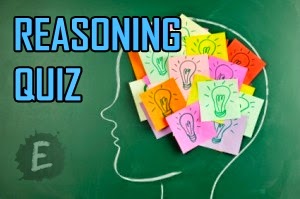Eight people are
sitting in two parallel rows containing four people each, in such a way that
there is an equal distance between adjacent persons. In row 1: P, Q, R and S
are seated (but not necessarily in the same order) and all of them are facing
south. In row 2: A, B, C and D are seated (but not necessarily in the same
order) and all of them are facing north. Therefore, in the given seating
arrangement each member seated in a row faces another member of the other row. C
sits second to the left of the person who faces P. D is an immediate neighbour of
C. Only one person sits between A and D. One of the immediate neighbours of R faces
B. Q does not sit at any of the extreme ends of the line.
1. Who amongst the
following sits second to the right of the person who faces A?
following sits second to the right of the person who faces A?
(a) P
(b) Q
(c) R
(d) S
(e) Cannot be determined
2. Four of the
following five are alike in a certain way based on the given seating arrangement
and thus form a group. Which is the
one that does not belong to that group?
following five are alike in a certain way based on the given seating arrangement
and thus form a group. Which is the
one that does not belong to that group?
(a) R
(b) C
(c) B
(d) A
(e) S
3. Which of the following
is true regarding R?
is true regarding R?
(a) R sits second to the right of S.
(b) P sits on the immediate right of R.
(c) D faces R.
(d) S is an immediate neighbour of R.
(e) The person who faces R is an immediate neighbour of C.
4. Who amongst the
following faces C?
following faces C?
(a) P
(b) Q
(c) R
(d) S
(e) Cannot be determined
5. Who amongst the
following faces Q?
following faces Q?
(a) A
(b) B
(c) C
(d) D
(e) Cannot be determined
Books For 2015 Banking/Insurance Exams




